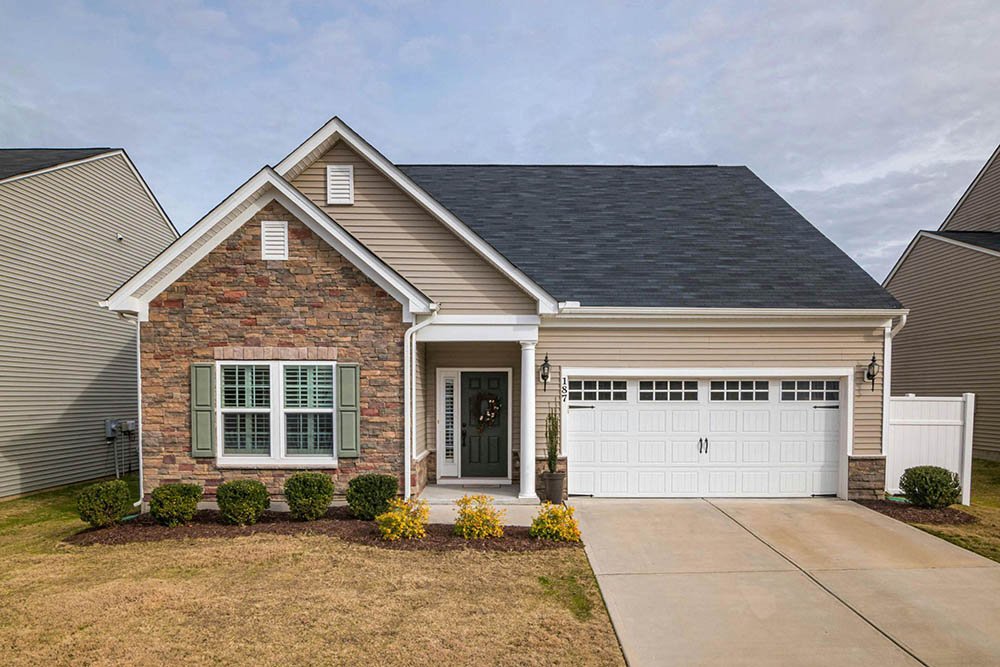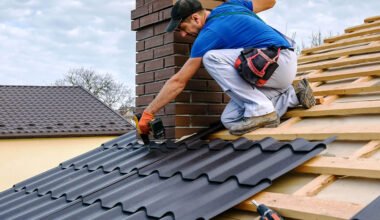Ever look at your house and feel like it’s just not looking as sharp as it used to? Maybe the color seems dull, or the gutters are hanging a little too low. These things sneak up on you over time. What started as a small chip in the paint or a cracked board can slowly turn into a list of problems. Your home’s exterior does a lot more than just look nice—it protects what’s inside and helps keep everything running smoothly.
If you’ve been wondering whether it’s time to make some updates, this list of seven signs will help you figure it out.
1. Your Roof Looks Worn Out
Most people don’t think much about their roof until it starts to leak. But even before water finds its way inside, your roof might already be in trouble. Look for signs like curling shingles, dark patches, or pieces missing entirely. If the roofline looks uneven or sagging in spots, that’s a big red flag.
Even if you haven’t had water issues inside, damage on the outside can lead to leaks, mold, or wood rot. Your roof takes a beating all year long, especially in areas with harsh winters or rainy seasons.
It’s smart to get a professional opinion if you notice anything unusual. A residential roofing company can take a look, spot potential issues early, and recommend repairs or replacement. Keeping your roof in good shape is one of the best ways to avoid bigger and more expensive problems down the line.
2. Paint Is Peeling or Faded
Peeling paint is more than just an eyesore. It’s a sign that your home’s outer layer isn’t protecting the surface underneath. When paint chips away or starts to bubble, it leaves the siding exposed to rain, wind, and sun damage.
Faded paint can also make a home look older than it is. A fresh coat of paint doesn’t just boost curb appeal—it also acts as a barrier against the elements. Whether you keep the same color or try something new, repainting is one of the easiest ways to refresh the look of your home and protect it at the same time.
3. Siding Is Cracked, Warped, or Dirty
Your siding has a tough job. It shields your home from weather, pests, and moisture. When it starts to warp, crack, or show signs of mildew or mold, it might be time for an update.
Sometimes the damage is easy to see, like gaps or loose panels. Other times, it’s more subtle, like sections that bow outward or discoloration that won’t wash off. Even small issues can lead to water damage inside your walls or higher energy bills.
New siding not only makes a home look brand new—it also improves insulation and lowers maintenance needs. Homeowners often switch to modern options like vinyl or fiber cement because they hold up better and require less upkeep.
4. Gutters Are Sagging or Overflowing
Gutters are often overlooked, but they play a big role in keeping your home safe. If they’re bent, sagging, or pulling away from the roofline, they’re not doing their job. Water may spill over the sides, pool around the foundation, or run down the siding.
That extra moisture can cause wood rot, mold, and even cracks in the foundation over time. Gutters should be cleaned regularly, but if they’re still having issues, it may be time for a full replacement.
Consider installing seamless gutters or adding guards to prevent debris buildup. New gutters can improve both function and appearance, and save you from costly water damage later on.
5. Windows and Doors Feel Drafty or Look Dated
Old windows and doors do more than let in a breeze—they let your energy bills climb higher. If you feel cold air seeping in during the winter or notice condensation between window panes, your home’s envelope isn’t sealed well.
Other signs include cracked frames, broken locks, or difficulty opening and closing. These aren’t just comfort issues—they can also pose security risks and affect resale value.
Upgrading to energy-efficient windows and doors improves insulation, boosts safety, and gives your home a cleaner, more updated look. Don’t forget to check the surrounding trim and caulking, too. Replacing or repainting those areas can give everything a polished finish.
6. Decking or Porch Boards Are Splintered or Worn
Wooden decks and porches look great when they’re well cared for, but they don’t stay that way on their own. If the boards are cracked, splintered, or feel soft underfoot, moisture has likely gotten in. That can lead to structural problems and make the space unsafe to use.
Even if the boards are still solid, a faded or uneven color could mean the wood needs to be sealed again. If you notice nails popping up or railings coming loose, repairs are needed.
Sometimes, a quick power wash and reseal will do the trick. Other times, replacing boards—or the entire deck—might be the better option. Some homeowners switch to composite materials for a more durable, low-maintenance finish.
7. You’re Simply Not Happy With How It Looks
Not all updates are about damage. Sometimes, you just want a change. Maybe the style no longer matches your taste. Or maybe you’re thinking about selling and want to make a strong impression.
If your home feels outdated or tired when you pull into the driveway, that’s a good enough reason to refresh it. Small touches like new light fixtures, house numbers, shutters, or landscaping can go a long way. Bigger upgrades like new siding or a fresh paint color can completely transform the way your home looks and feels.
A home exterior refresh doesn’t have to mean tearing everything down and starting over. Often, it’s about fixing what’s broken, replacing what’s worn out, and updating what doesn’t work for you anymore. These seven signs can help you figure out what needs attention and where to begin.
Whether it’s peeling paint or a worn roof, these updates do more than make your home look better. They protect your space, improve comfort, and even raise your home’s value. If you’ve noticed one or two of these signs lately, it might be time to make a change. Start small or go big—either way, your home will thank you for it.



